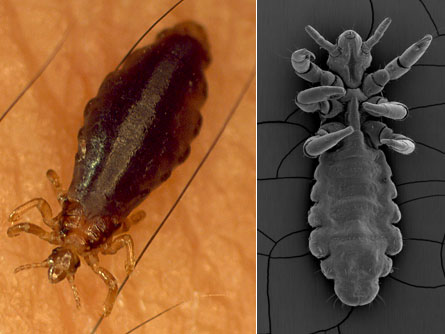- More than 2 years ago
Although generally despised, the blood-sucking human body louse, Pediculus humanus, has gained newfound popularity among scientists for a surprising genetic feature. Instead of carrying mitochondrial DNA in a single chromosome loop, the vermin splits this DNA among many chromosomes, making the louse an anomaly in the animal world, scientists report online March 31 in Genome Research.

Animal cells stash DNA in the nucleus, where the bulk of genetic material is packed, and in the mitochondria, specialized energy factories in the cell. The mitochondrial DNA of more than 1,500 animals has been sequenced, says study coauthor Renfu Shao, of the University of Queensland in Brisbane, Australia. “With very few exceptions, all these animals have a single circular mitochondrial chromosome,” Shao says. In contrast, the mitochondrial genes of the blood-sucking louse are split among 18 circular mini-chromosomes, the new research shows.
Study coauthor Ewen Kirkness speculates that the multiple chromosomes may bump up genetic variation. “We see bits of genes being swapped between different circles,” says Kirkness, of the J. Craig Venter Institute in Rockville, Md. This gene mingling may have allowed lice to quickly adapt when something new showed up on the menu: human blood.






